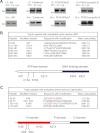Proteomic assessment shows that many endoplasmic reticulum (ER)-resident proteins are targeted by N(epsilon)-lysine acetylation in the lumen of the organelle and predicts broad biological impact
- PMID: 22628546
- PMCID: PMC3391156
- DOI: 10.1074/jbc.C112.362871
Proteomic assessment shows that many endoplasmic reticulum (ER)-resident proteins are targeted by N(epsilon)-lysine acetylation in the lumen of the organelle and predicts broad biological impact
Abstract
In addition to the nucleus, cytosol, and mitochondrial lumen, N(ε)-lysine acetylation also occurs in the lumen of the endoplasmic reticulum (ER). However, the impact of such an event on ER functions is still unknown. Here, we analyzed the "ER acetyl-lysine proteome" by nano-LC-MS/MS and discovered that a large number of ER-resident and -transiting proteins undergo N(ε)-lysine acetylation in the lumen of the organelle. The list of ER-resident proteins includes chaperones and enzymes involved with post-translational modification and folding. Grouping of all acetylated proteins into major functional categories suggests that the ER-based acetylation machinery regulates very diverse biological events. As such, it is predicted to play a fundamental role in human physiology as well as human pathology.
Figures



References
-
- Yang X. J., Seto E. (2007) HATs and HDACs: from structure, function, and regulation to novel strategies for therapy and prevention. Oncogene 26, 5310–5318 - PubMed
Publication types
MeSH terms
Substances
Grants and funding
LinkOut - more resources
Full Text Sources
Research Materials

